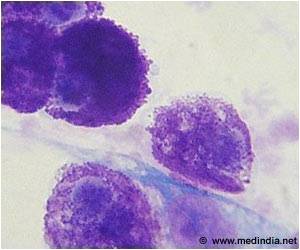Outcompeting cancer is possible by a new mechanism termed ‘fitness fingerprint,’ of which there are two types – Win and Lose. Blocking these fitness fingerprints can reduce tumor size and even eliminate cancer.
- Outcompeting cancer is now possible by modulating a new cellular mechanism called ‘fitness fingerprint’
- There are two types of fitness fingerprints – Win and Lose
- Blocking these ‘fitness fingerprints’ can reduce tumor size and even eliminate cancer
The study was led by Dr. Eduardo Moreno, Ph.D, who is a Principal Investigator at the Champalimaud Center for the Unknown in Lisbon, Portugal. He has discovered a cell-competition mechanism, which he has termed ‘fitness fingerprints’. This ‘fitness fingerprint’ mechanism was first discovered in the fruit fly (Drosophila melanogaster) in 2010 by Moreno’s group.
The present study, published in Nature, has established that the same mechanism also exists in humans. Moreover, by blocking this mechanism, the proliferation of the cancer cells can be stopped.
TOP INSIGHT
Outcompeting cancer is now possible by modulating a new mechanism termed ‘fitness fingerprint.’ There are two types of ‘fitness fingerprints’ – Win and Lose. Blocking these fitness fingerprints can reduce tumor size and even eliminate cancer.
Study Findings
- The gene that codes for ‘fitness fingerprints’ was identified in the human genome
- The gene coded for four different types of ‘fitness fingerprints’, including two types of Win ‘fitness fingerprints’ and two types of Lose ‘fitness fingerprints’
- The Win ‘fitness fingerprints’ indicated that the cells were young and healthy
- The Lose ‘fitness fingerprints’ indicated that the cells were old or damaged
- The impact of the Win and Lose ‘fitness fingerprints’ on cancer growth was evaluated by studying their expression patterns in the following four types of tissues:
- Malignant tumors – Breast and colon
- Benign tumors – Breast and colon
- Tissue adjacent to the tumors
- Normal tissue
- Expression of Win was less in normal tissue, while expression of Lose was even lesser
- Expression of Win was significantly elevated in all cancer tissues, with more in malignant tumors than benign tumors
- Expression of Lose was significantly higher in tissue adjacent to tumors, compared to normal tissue
- Expression of Lose was significantly higher in tissue adjacent to malignant tumors, compared to benign tumors
- Expression levels of Win in tumors and Lose in adjacent tissues, accurately predicted cancer malignancy 86.3 percent of the time
Interpretation of the Study Findings
The findings indicate that neighboring cells in the human body continuously monitor each other’s activity and level of fitness through the two types of fitness markers identified on their surface, namely, Win and Lose.If a cell is less fit than its neighboring cells, meaning that it expresses less Win and more Lose, then the neighboring cells eliminate it, thereby ensuring that the tissue as a whole remains healthy. This mechanism is important for the following biological processes:
- Normal growth and development
- Regeneration of tissues following injury
- Prevention of premature aging
Investigation of Potential Therapeutic Applications
The study findings indicated that high expression of Win in tumor tissue and high expression of Lose in adjacent tissue was an essential requirement for the growth and expansion of the tumors. Based on these findings, the potential therapeutic applications were investigated as follows:- The above mechanism was blocked by knocking out the Win/Lose fingerprints in human tumor tissue, transplanted in mice
- This led to a reduction in tumor size, indicating that the aggressiveness of the cancer cells towards adjacent host cells was significantly decreased
- In an attempt to further increase the therapeutic potential, the blocking of Win/Lose expression was combined with chemotherapy
- This led to a further reduction in tumor size and in some cases, complete elimination of the tumors
Future Plans
The research team plans to conduct a more detailed study of the mechanism associated with the expression of Win/Lose ‘fitness fingerprints’ and its effect on cancer. They also plan to develop a new type of cancer drug in collaboration with clinicians.Concluding Remarks
Moreno indicates that the present study was based on purely curiosity-based research that led to a discovery having benefits for human health. In this regard, he says: “When we began studying cell competition in the fruit fly, we were addressing it as a basic biology question: how do tissues eliminate viable, but suboptimal cells. From there to potential cancer therapies seems like an almost unlikely development, but this is how research works; you start with the curiosity to know how things work and from there, sometimes, you find yourself on the road to potential novel therapies.”He concludes: “These findings are very encouraging, but they are still preliminary and it will be some years before we are able to use them to help cancer patients.”
Funding Source
The study was funded by multiple organizations. Some of these include the European Research Council, the Swiss National Science Foundation, the Josef Steiner Cancer Research Foundation, the Champalimaud Foundation, and the Swiss Cancer League, among others.Reference:
- Flower Isoforms Promote Competitive Growth in Cancer - (https://doi.org/10.1038/s41586-019-1429-3)
Source-Medindia
 MEDINDIA
MEDINDIA





 Email
Email










